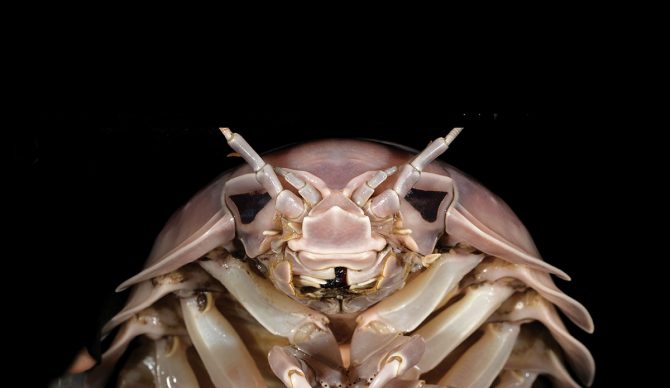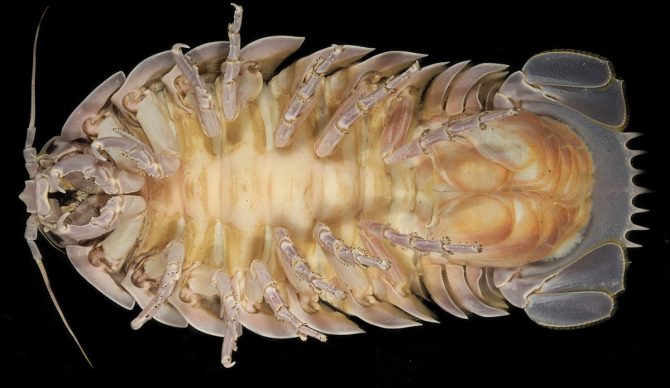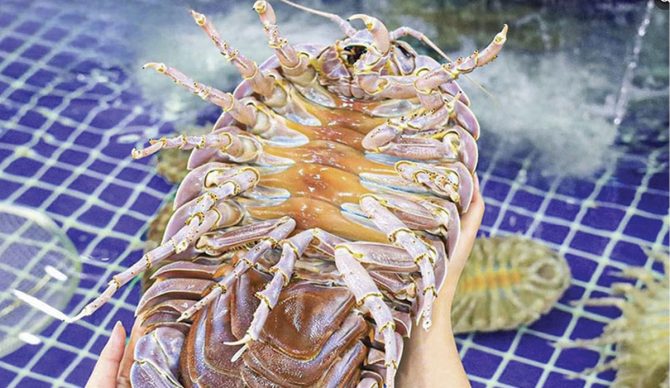
“Luke, I am your father.” Photo: ZooKeys
A new isopod species has been discovered by researchers in a lab in Singapore, and it is massive, at least relative to other giant isopods. Its discoverers apparently have a sense of humor, because they decided to call it Bathynomus vaderi after Darth Vader. On inspection, it’s pretty clear why: it has the same head shape as the helmet of the iconic villain.
“I am the biggest Star Wars fan on the team, as it’s my vintage,” Peter Ng at the National University of Singapore, said to New Scientist. “The first movie was in 1977, in my youth, and it was cool,” says Ng. “But we all agree that the face of Bathynomus looks so much like Darth Vader that it just had to be named after the Sith Lord.”
The Vader bug (that’s what I’m calling it, anyway) is part of an already known genus of giant isopods called Bathynomus. Some species in that particular genus grow almost a foot in length and generally resemble terrestrial isopods, like the common wood bug. The Vader bug does too, except it can grow over a foot long and weigh a little over two pounds.

Eat it, you coward! Photo: ZooKeys
Although it is a big creature, it’s been surprisingly difficult to find, something that’s bolstered by the fact it took researchers this long to find it. So far, it has only been spotted off the Spratly Islands in Vietnam, but according to reports, it is likely to live in other parts of the South China Sea.
Giant isopods are a bit of a delicacy in some parts of the world, which led to the discovery of the Vader bug.

Seafood market in Hanoi, Vietnam, selling Bathynomus jamesi, a species slightly smaller than the Vader Bug. Photo: ZooKeys
“In Vietnam, Bathynomus, known locally as bọ biển or ‘sea bugs,’ has been fished for food apparently since 2017,” researchers wrote in a study detailing the discovery. “Specimens are caught in deep water by trawlers operating in various parts of Biển Đông (East Sea, Vietnamese part of the South China Sea) and brought back to shore alive in ice boxes. The isopods are kept out of water and chilled, and in this state, can survive for many days if well insulated. They are then transported to restaurants for sale… It is noteworthy that four type specimens of B. vaderi were obtained from dealers in Quy Nhơn in southcentral Vietnam, where the isopods are fished.”
Their taste is described as “better than lobster,” but they look pretty unappetizing, don’t they?

